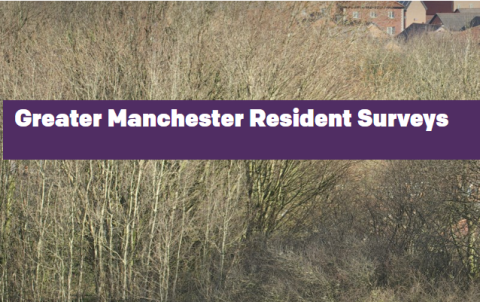Greater Manchester Residents’ Survey #11

Cost of Living
- While the proportion of respondents reporting cost of living increases has fallen slightly since November, it remains well over half (59%) and higher than the proportion for Great Britain as a whole (46%)
- The proportion of respondents who have borrowed more money or used more credit compared to a year ago has also decreased since November.
- Food and energy remain the most common drivers of cost increases. There has been a significant increase since November in those saying home broadband / mobile phone cost increases have contributed to their increased costs of living, but a significant decrease in those saying fuel prices have contributed.
- There has been an increase since November in the proportion of renters who are behind on their payments, while the proportion of mortgage holders behind on their payments is unchanged – renters are now more than twice as likely to be behind on their payments than mortgage holders.
- Over 9 in 10 respondents now say they are taking actions as a result of cost of living increases (such as spending less on non-essentials or shopping around more) - a significant increase since the question was last asked in September.
Healthy Homes
- Almost two in three respondents have experienced a problem in their home in the last year – including over 1 in 3 who are currently experiencing an issue.
- Renters are more likely than homeowners to experience any of the problems asked about, with renters from local authorities / councils or housing associations / trusts experiencing most issues more frequently than private renters.
- Almost two in three respondents who have reported these problems are dissatisfied with the outcome.
- A quarter of all respondents say such problems have had a large impact on their physical or mental health – with renters more than twice as likely to say this than homeowners. Damp / mould (9%) and fears of losing your home are the housing issues most commonly causing large health impacts in the population.
Your local area
- Around three quarters of respondents are satisfied with their local area and would recommend it as a place to live – with those very satisfied and who would definitely recommend it increasing since November.
- Those very satisfied with local cultural facilities have also increased since November – although the proportions satisfied with local schools/colleges, parks and other green spaces, services and amenities, health and care services and local town centres all remain higher than those satisfied with their cultural facilities.
Transport and the night-time economy
- Around 4 in 10 public transport users who don’t use public transport after 6pm say they have a need to. They are most commonly put off doing so by safety concerns, reliability and availability, but cost is far less of a factor.
- Of those who have used public transport after 6pm, respondents say they are most likely to feel unsafe doing so to some extent between 10pm and midnight, but almost twice as likely again to feel not safe at all after midnight.
- Those using public transport after 6pm are most likely to do so for leisure purposes (such as recreation or visiting friends / family), although over 1 in 3 have done so for work.
- Around a quarter of respondents said a lack of public transport at night has prevented them accessing opportunities (such as work, evening education or seeing friends) or services (such as late night healthcare).
Read the full report
